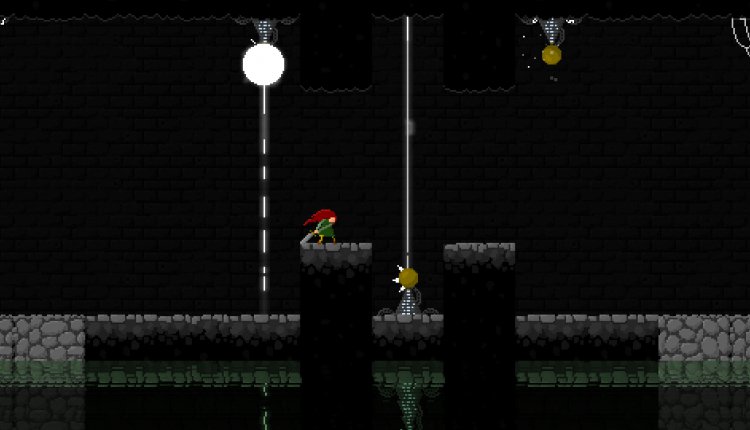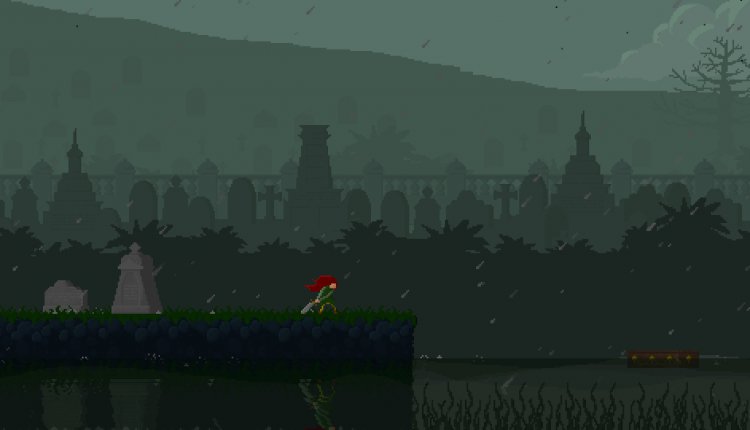Mable and the Wood — Shape-shift and trick
Mable and the Wood is a platformer with a twist: you can turn into other creatures and use their abilities to help you fight and overcome obstacles.
Mable and the Wood does the Metroidvania dance differently. Instead of having plentiful access to areas where you can fight enemies and unlock doors, you rely on your seemingly magical power to transform into other creatures in order to fly, swing and simply defeat enemies. Why does Mable need to rely on such an unconventional means of traversal? Well, that’s because she can’t even lift the humongous sword she carries around — she drags it around, which provides a problem that requires a creative solution.
The first ability you receive will turn Mable into a fairy, where she drops her sword and flitters about. Once you line up an enemy between you and the sword, she can call it to her, slicing the enemy with the sword in turn. This, however, leaves you both open to attack as you maneuver around the moving, attacking enemies, and requires quick calculations to determine the travel path of the sword itself; it can even cut through multiple enemies at once. Your flight distance from your sword is limited, but the mechanic of flying and slicing works and once you get the feel of it down, you’ll be zooming around platforms in no time.
Each additional creature’s power that you obtain, you do so from beating bosses. The first boss Mable comes across is a gigantic spider, and once you use your fairy-slicing powers to defeat it, you gain the ability to turn into an arachnid yourself. The ability feels very akin to many of the Spider-man games honestly, as you are able to cast your webbed sword upwards to stab into ceilings, which then allows you to swing with ease across entire rooms in a manner of seconds. Your spider-webbed sword can also attack enemies, and can cut through red thorns, opening up new pathways to explore as a result.
With lots of platforming and enemies to defeat, it’s great that the game offers so many different ways of playing. There are no limits to what creature you can use at what time, which gives a new approach to the typical restrictions of Metroidvanias. If you find using the fairy power easier to traverse vertically than swinging around the platform as the spider, you can do that. If you’d rather do ♫whatever a spider can♫, then that works too. With eight different forms to switch to, you’ll likely end up with a favorite, but the game is, of course, set up with the intention of using particular creatures for certain challenges. The sandbox approach works wonders here, and even though there are some physics-based snags here and there, the result is just plain fun to play.
Sometimes, however, the blessing of your abilities can feel like a curse. Because of Mable’s inherently slow movement, you will find that, at times, you become left out of magical power and turn back into Mable, unintendedly. This can leave you in a tough spot, scrambling to recover and reconfigure your state or position. It’s not a deal-breaker, but it can feel like a vast contrast to the motion you quickly find yourself accustomed to. If you do get hit by an enemy, you’ll lose health along with precious silver crystals, which serve as the game’s currency. Slicing through baddies will provide you with both, conveniently, so you’ll never feel like you are stuck with no way out. Enemies respawn on screen load, so you can pop over a screen and come back to reap some hearts if you find yourself badly injured.
Something that should be mentioned is that you can, if you want to, play Mable and the Wood in its entirety without killing anything. This brings back memories of runs through the Metal Gear Solid games, where it isn’t exactly easy to avoid violence at times. It’s nice that the feature is there, and since the story is affected by your choices, whether you choose death and destruction or peaceful platforming — you’ll have to deal with your choice in the end.
Mable and the Wood serves as an intriguing take on playful platforming, giving you access to whimsical ways to travel, and is likely the most unique combat system I’ve seen in video gaming. While the areas can feel a bit sparse at times, it offers up extra space to move about, lending extra fun to explore with your various forms. While I didn’t find the game particularly difficult, there are certainly some platforming challenges to overcome, and the game handles it nicely and in a well-balanced manner. If you’re looking for a fun Metroidvania to play around with, Mable and the Wood is certainly a fine choice.
Mable and the Wood is available now on the Nintendo Switch, Xbox One and Steam.
Comments are closed.